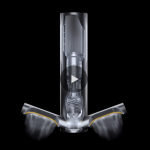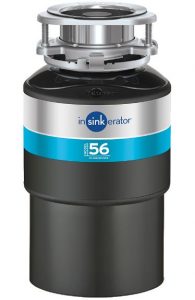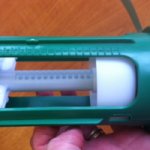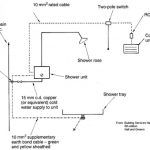As the title implies these are a series of technical blogs (mostly) written by Cath about all aspects of plumbing (whether sustainable or not). Originally supplied for the AECB (with payment gratefully received!), Cath will continue to add to this page whenever her technical nerdy side needs an outlet.

Copper v HEP2O
Back in 2002 I was doing an environmental masters degree at The Centre of Alternative Technology in Machynlleth, Wales. We had to write a lot of essays but could basically choose our own essay title as long as it was relevant to the module. For the materials unit I decided to carry out a Life Cycle Analysis of copper pipe v plastic pipe, in this case specifically HEP2O (polybutylene)which was becoming more and more ubiquitous on site. I was not a fan of HEP2O; I loved copper and wanted to continue to use it. So what better way than to
Read blog
Read blog

Leaky loos – why it’s not as simple as faulty flush valves
If you listened to The Great Leaky Loo Scandal aired on Costing the Earth, Radio 4 (aired Sept 2020) you would be forgiven for thinking that if only flush valves were banned and the WC siphon (a flushing mechanism that uses air as the barrier and so is inherently far less prone to leaking/letting by) made a comeback, then water would no longer be wasted from the UK’s toilets. But the reality is more complicated. A bit of history In 2001 the Water Regulations in the UK were changed to allow dual flush toilets, flush valve mechanisms and
Read blog
Read blog

Do not use the toilet while the train is standing in the station – Cath Hassell, India and UK
“No more platform No 2s” was a headline in the Guardian back in October 2017 referring to the fact that in 2019 the practice of trains discharging the contents of their toilets directly onto the tracks would stop.[1] A combination of new trains and retrofitting old stock with holding-tank toilets would end the unsightly view of poo on the tracks and render the instruction not to use the toilet in stations obsolete. And where exactly did this story come from? India perhaps where over 1 billion people are forced to participate in open defecation in the absence of safe sanitation?
Read blog
Read blog

A review of ‘Mayordomo’ by Stanley Crawford
If you asked me would I have liked to read a book about a year in the life of a ditch I would probably have demurred. If you had told me it was an irrigation ditch in northern New Mexico in the US and documents a way of life little changed over several hundred years, I would probably still have demurred. After all, we are talking about a ditch here aren’t we? But given it was a gift and inscribed with a message that it might even have been the second time i was sent this book , it seemed
Read blog
Read blog

Can hand dryers damage your health?
Can hand dryers damage your health? I love Dishoom in Granary Square, Kings Cross. Especially their old fashioned toilets and wash basins. But a couple of years ago, as I was using the loo, the peace was shattered. The reason? Another user was drying her hands … Now, it wasn’t the first time I had used the loo, but it was the first time I had heard the dryers. How come? Well, I never dry my hands using a dryer preferring to use the tried and tested ‘wipe hands on back of trousers’ method (not as hygienic maybe, but definitely
Read blog
Read blog

Toilets of the World by Morna E. Gregory and Sian James
I’m always a sucker for a book with toilets in the title, so very pleased to get this for Christmas. Even if I did have to buy it myself! Starting with a short history of toilets it then divides its toilets depending on which continent they are situated. They range from quirky to picturesque from those in motorway service stations to loos on remote hiking trails. From highly decorative Victorian examples to functional stainless steel or concrete. From toilets on stilts over the sea to one carved from the trunk of a dried cactus. There are plenty of urinals on
Read blog
Read blog

The problem with waste disposal units
The disposal of food waste is a huge problem. Food scraps range from 10% to 20% of household waste and around 40% of total commercial catering waste with approximately 77% of all food waste being liquid. Food waste creates public health, sanitation and environmental problems at each step, beginning with on-site storage (whether internal or external) followed by truck-based collection. Burned in waste-to-energy facilities, the high water-content of food scraps means that the process consumes more energy than it generates; buried in landfill, food scraps decompose and generate methane gas. And putting food down the drains, via macerators or waste
Read blog
Read blog

Sewers for the 21st Century – The Thames Tideway Tunnel
In London, 39 million tonnes of raw sewage ends up in the River Thames each year – the effect of excess rainwater in the combined sewer system that covers most of the city. Just 2mm of rain is enough to trigger one of these events in some areas of the capital. Many of you will have heard about the ‘super sewer’ Thames Water’s solution to prevent such overspills happening. Thanks to the BBC’s policy of ‘balance’ Cath Hassell of ech2o was invited onto BBC breakfast to look round the site of the super sewer, and talk about front of pipe
Read blog
Read blog

A review of ‘Septic Tank Options and Alternatives’ by Feidhlim Harty
This is a fascinating, clearly written and highly informative book on a very important topic, namely, how to deal with your poo if you are off mains drainage.
Read blog
Read blog

UK Raingardens Guide
Rain gardens, or rain garden planters, are a quick and easy way to disconnect rainwater downpipes from combined sewers. Find out how to do it and the best plants to use.
Read blog
Read blog

The Water Technology List
In June 2016 there was a review of the Water Technology List. Cath represented the AECB on it and this is her report.
WARNING. Seriously nerdy! Though ultimately fascinating...
Read blog
Read blog

AECB Water blog 7
More about hot water in Passivhaus buildings, why urinal controls rock in schools, greywater recycling, wastewater heat recovery - where it all started, overestimating the savings from WC upgrades in schools ...
Read blog
Read blog

AECB Water blog 6
How adolescents and showers use more energy than space heating a Passivhaus dwelling, fuel cells and super efficient WCs, Arbed dŵr (saving water in Wales), the mis-specification of electric showers...
Read blog
Read blog

AECB Water blog 5
Public toilet design, barrier MDPE, power showers,wastewater recycling v solar htermal under SAP, combi boilers with more than one bathroom ...
Read blog
Read blog

AECB Water blog 4
Combi boilers, specifying showers, ledge toilets, solar thermal for boats, chlorine and swimming pools, architects v engineers ...
Read blog
Read blog

AECB Water blog 3
New ratings for hot water cylinders, tap standardisation, recirculating showers, global trends in water efficiency, the problem with 89mm WC pan outlets, lead welding ...
Read blog
Read blog

AECB Water blog 2
Passivhaus now with renewables, which is best - gas or electric showers, cold taps in public washrooms, how to ensure a solar thermal system operates at its optimum efficiency ...
Read blog
Read blog

AECB Water blog 1
Flooding, 'Le Penseur' - a sit-down toilet that imitates squatting, flooding, SWIG, the Renewable Heat Incentive will it kickstart the solar thermal industry, solar thermal and short showers ...
Read blog
Read blog
